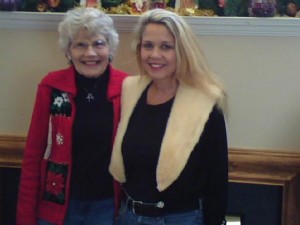 When an individual becomes an addict, they aren’t who they once were. A formerly honest person will lie, cheat, or steal to get their next fix. As a society we must be aware of how desperate this chain of deception can be, and how we can become ensnared in its web, despite our good intentions. For example, recently I was in a local drugstore when a seemingly frantic male approached me holding his cell phone in his hand. He told me that he had just spoken with his grandmother and was terribly embarrassed to ask, but he needed an additional $10.00 to buy a prescription for a loved one. His request tugged at my heartstrings. The young man dressed in a plaid cowboy shirt could sense my ardent desire to help, but what he couldn’t sense is that my compassion was checked by a painful past experience.
When an individual becomes an addict, they aren’t who they once were. A formerly honest person will lie, cheat, or steal to get their next fix. As a society we must be aware of how desperate this chain of deception can be, and how we can become ensnared in its web, despite our good intentions. For example, recently I was in a local drugstore when a seemingly frantic male approached me holding his cell phone in his hand. He told me that he had just spoken with his grandmother and was terribly embarrassed to ask, but he needed an additional $10.00 to buy a prescription for a loved one. His request tugged at my heartstrings. The young man dressed in a plaid cowboy shirt could sense my ardent desire to help, but what he couldn’t sense is that my compassion was checked by a painful past experience.
Years ago, this same story had caused me to give another stranger $20 to buy medicine for a non-existent sick child. I was a single mom back then, and that $20 was a large portion of our meager grocery budget. I found out later through a reputable source that my hard-earned money was used to buy drugs. My intentions were right, because the Bible says, “…if anyone has the world’s goods, and sees his brother in need, yet closes his heart against him, how does God’s love abide in him?” Still, I vowed to use greater wisdom.  That’s why I went to the pharmacy counter inquiring if there was a young man unable to pay for a prescription. I wanted to help anonymously, if the need was authentic. The drugstore clerk informed me that no one matching his description or situation had been there.
That’s why I went to the pharmacy counter inquiring if there was a young man unable to pay for a prescription. I wanted to help anonymously, if the need was authentic. The drugstore clerk informed me that no one matching his description or situation had been there.
We have to use great caution continually, since headlines report fatal overdoses in area motel rooms, murders in nearby sleepy villages, and rampant crime everywhere. Most of it is heroin-related. Yet it’s easy to believe that heroin addiction will never affect someone you care about, until it does.
The trouble is that very few of us remain unscathed by this deadly epidemic. According to the most recent statistics reported by the Centers for Disease Control and Prevention, there were 5,927 deaths in 2012 compared to 8,260 in 2013. That’s an alarming 39% increase. Over a decade ago, I experienced the loss of a close acquaintance to heroin. Back then, little was known about this cunning culprit. I was confused that its victim, a middle-aged mom who had spent much of her life as a professional woman, had been trapped in heroin’s clutches. Her funeral left many folks searching for answers. It seemed shocking that she had pulled off a double life, but it was not a shock to those close to her. They had lived with the chaos, fear, and unpredictability that loving an addict creates. No one could have forecast this treacherous path strewn with tears and hopelessness. After all, no little girl or boy says, “When I grow up, I want to be a heroin addict.” It must be a parent’s worst nightmare, and it’s definitely an extended family member and friend’s frustrating role. Often, we don’t speak of heroin addiction in our inner circle, lest we shame those already heaped with guilt. We are further silenced by our inability to provide answers.
That’s why I started reading everything I could about the subject. I even found myself studying the local obituaries of those whose deaths seem to be heroin-related. Of course, it can be difficult to tell. A few months ago, I didn’t have to wonder if the young man with an engaging smile died of an overdose. His obituary read, “… [He] was taken away from us far too soon after fighting a battle for his life against heroin addiction.” My heart broke for his family, but it also swelled with pride that they had the courage to confront heroin head on. Not to bury the tragic truth with their loved one, instead to say that he fought valiantly, but lost the battle.
What that family did was of groundbreaking importance. They called the enemy out, and we need to have that same courage. To keep talking about the existence of heroin in our communities, and to be honest that as a relative, neighbor, churchgoer, or friend, our lives have probably already been personally impacted in some way. The first step in finding a solution is to accept that the problem is closer to home than we care to admit.
 Christina Ryan Claypool is an Ohio AP and national Amy award-winning freelance journalist and inspirational speaker. Contact her though her Website at www.christinaryanclaypool.com. She has been featured on CBN’s 700 Club and on Joyce Meyer’s Enjoying Everyday Life TV programs.
Christina Ryan Claypool is an Ohio AP and national Amy award-winning freelance journalist and inspirational speaker. Contact her though her Website at www.christinaryanclaypool.com. She has been featured on CBN’s 700 Club and on Joyce Meyer’s Enjoying Everyday Life TV programs.


 “It wasn’t your time,” the body shop technician said matter-of-factly surveying my husband’s wrecked car. As Nate, whose name was embroidered on his work shirt, began wrapping the totaled vehicle with clear plastic; I dutifully gathered my personal possessions.
“It wasn’t your time,” the body shop technician said matter-of-factly surveying my husband’s wrecked car. As Nate, whose name was embroidered on his work shirt, began wrapping the totaled vehicle with clear plastic; I dutifully gathered my personal possessions. There were several other remarkable occurrences surrounding the event. When dressing the morning of the accident, my treasured angel pin, a gift from late Jewish Holocaust survivor, Elisabeth Sondheimer, seemed to sparkle warningly as it fell to my bedroom floor. Then before leaving, my normally rushed school administrator spouse stopped uncharacteristically to put his arms around me and say a quick prayer.
There were several other remarkable occurrences surrounding the event. When dressing the morning of the accident, my treasured angel pin, a gift from late Jewish Holocaust survivor, Elisabeth Sondheimer, seemed to sparkle warningly as it fell to my bedroom floor. Then before leaving, my normally rushed school administrator spouse stopped uncharacteristically to put his arms around me and say a quick prayer.




 The holidays are upon us and some folks don’t feel so merry. This is especially true for those who have lost a loved one recently. Grieving can make the glitter of the Christmas season grow particularly dim.
The holidays are upon us and some folks don’t feel so merry. This is especially true for those who have lost a loved one recently. Grieving can make the glitter of the Christmas season grow particularly dim.
 As we observe Thanksgiving week, everyone seems to be talking turkey, family gatherings, and all about giving thanks. Yet, maybe you haven’t been at the top of your game lately, which can make it difficult to have an attitude of gratitude. Whether it’s losing a loved one, unemployment, a chronic health crisis, or a financial dilemma, life’s circumstances can really get you down.
As we observe Thanksgiving week, everyone seems to be talking turkey, family gatherings, and all about giving thanks. Yet, maybe you haven’t been at the top of your game lately, which can make it difficult to have an attitude of gratitude. Whether it’s losing a loved one, unemployment, a chronic health crisis, or a financial dilemma, life’s circumstances can really get you down.